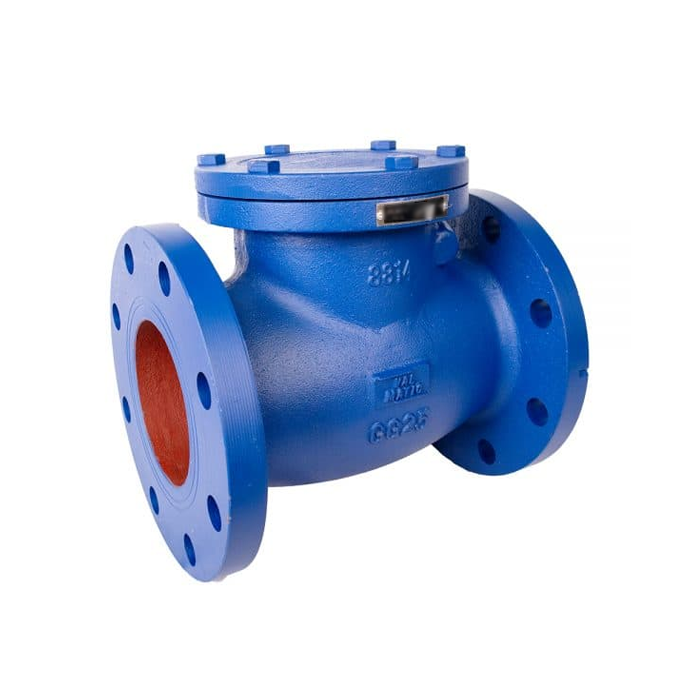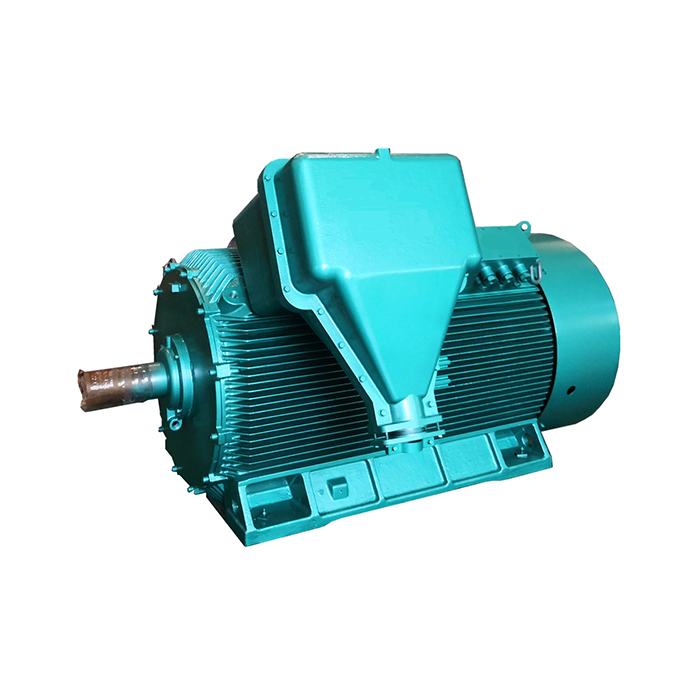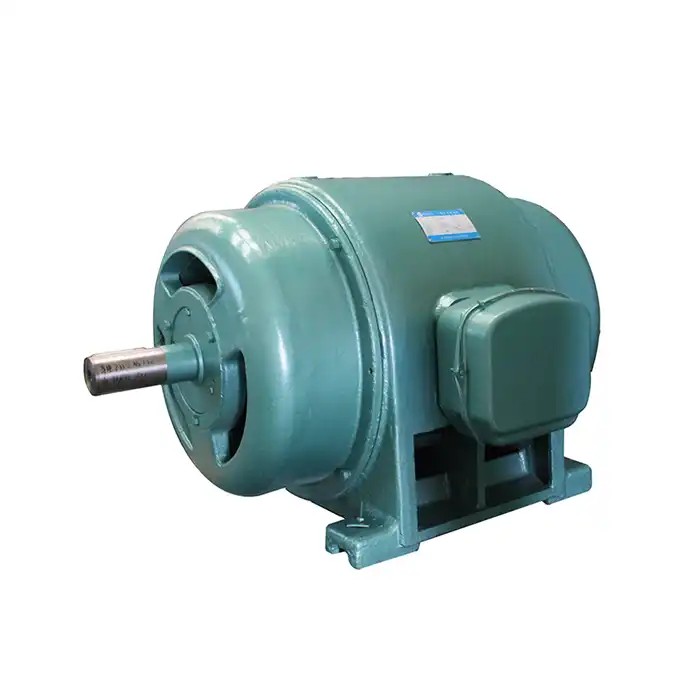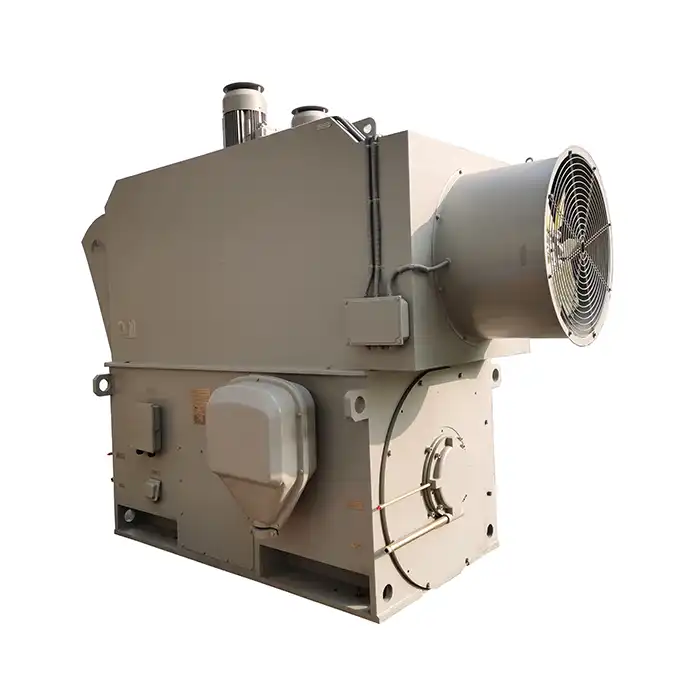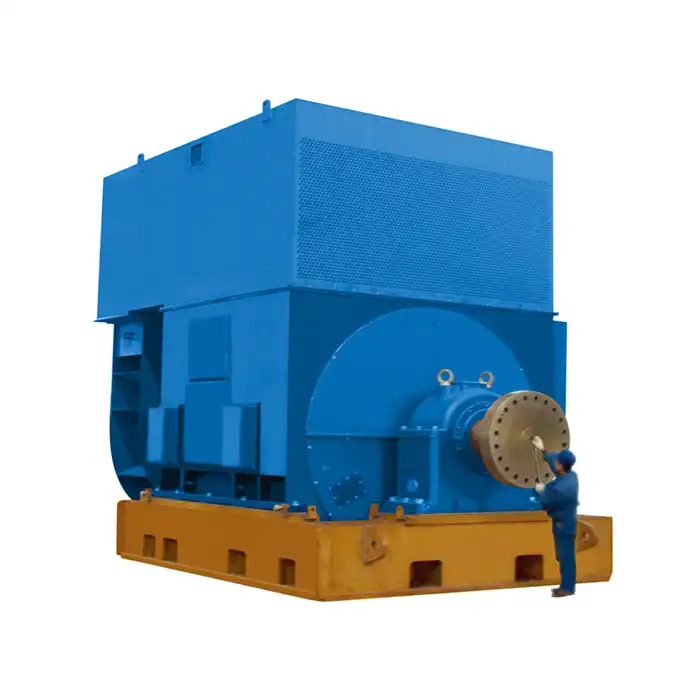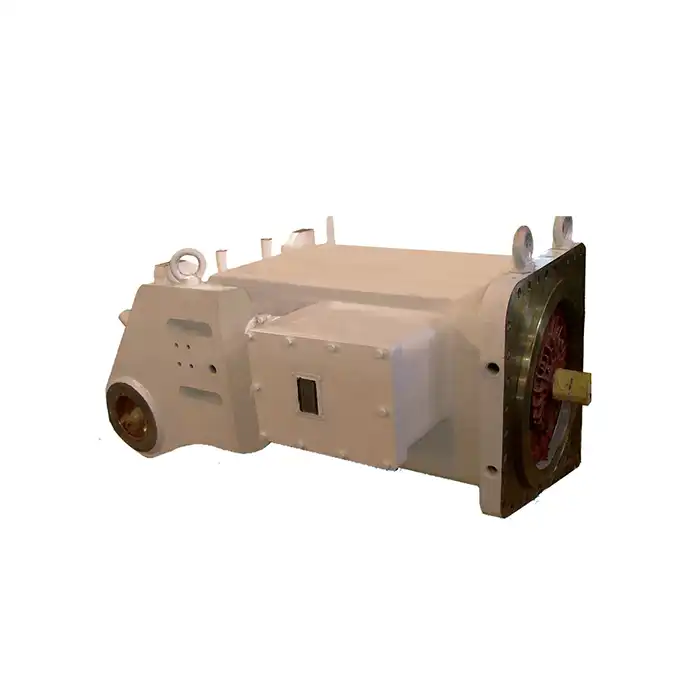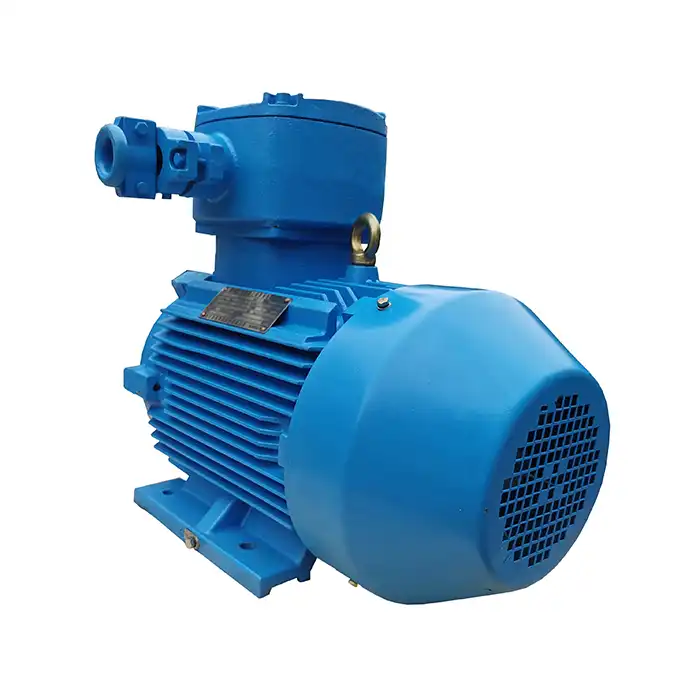Insulation is essential to inverter duty motor lifetime and performance. These specialised motors are essential in a variety of industrial applications because they are made to work effectively with variable frequency drives (VFDs). To optimise these motors' potential and guarantee dependable functioning, it is crucial to comprehend the importance of insulation.
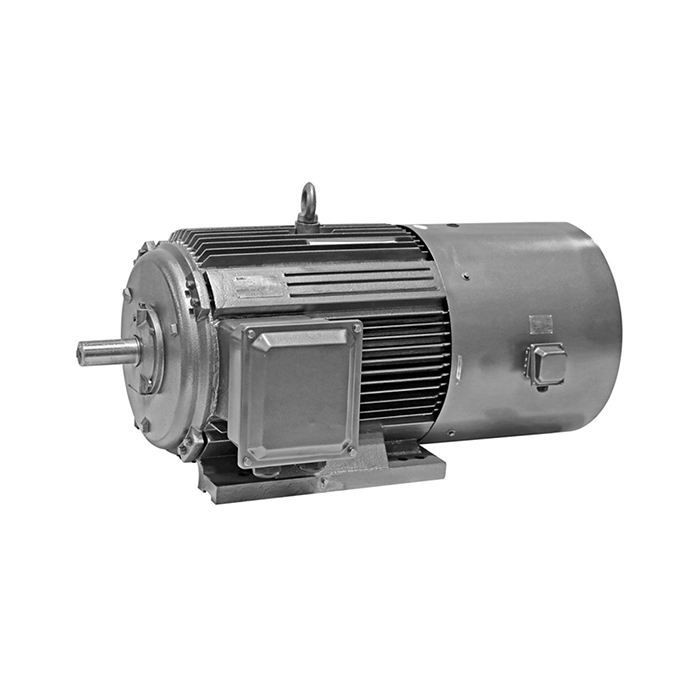
Series:YVFE2
Frequency conversion range:30hz~50hz,5hz~70hz,5hz~100hz
Power range:0.75-355kW
Protection level:IP55
Application:are suitable for driving various mechanical equipment that require continuous and frequent forward and reverse rotation, such as steel rolling, lifting, transportation, machine tools, printing and dyeing, papermaking, chemicals, textiles, pharmaceuticals, etc., and can be used with various domestic and foreign variable frequency power supplies.
Advantage:high efficiency, wide speed range, high precision, stable operation, and easy operation and maintenance.
Certificate:installation dimensions comply with International Electrotechnical Commission (IEC) standards.
Others: SKF, NSK, FAG bearings can be replaced according to customer requirements.
Insulation types: Protecting against voltage spikes
One of the primary functions of insulation in inverter duty motors is to protect against voltage spikes. These spikes can occur due to the rapid switching of the VFD, potentially damaging the motor's windings if not properly managed.
Enhanced winding insulation
Inverter duty motors employ enhanced winding insulation systems specifically engineered to endure the electrical stresses created by variable frequency drives (VFDs). These insulation materials are selected for their exceptional dielectric strength, thermal resistance, and mechanical durability, allowing them to withstand repeated exposure to high-frequency voltage pulses. The rapid switching inherent to VFD operation can generate steep voltage waveforms that place significant strain on motor windings, potentially leading to partial discharges and insulation breakdown. To prevent this, manufacturers use multi-layer insulation wraps, reinforced slot liners, and heat-resistant tapes that maintain performance over prolonged use.
Additionally, careful attention is given to the insulation's compatibility with thermal cycles and environmental conditions, ensuring long-term reliability. By resisting degradation, these advanced winding insulation systems significantly extend motor service life and operational stability.
Insulation systems for high-frequency operation
The insulation systems in inverter duty motors are meticulously designed to handle the unique challenges associated with high-frequency switching. Unlike conventional motors, these systems must contend with rapid voltage changes, higher operational heat, and potential corona discharge effects. To address these issues, manufacturers use specialized varnishes, epoxy resins, and vacuum pressure impregnation (VPI) methods that completely penetrate and seal the windings. This process not only enhances dielectric strength but also improves heat dissipation, reducing the risk of thermal hotspots.
Furthermore, these systems incorporate moisture-resistant and vibration-tolerant materials to maintain insulation integrity in harsh environments. The resulting construction effectively minimizes partial discharge activity and ensures that electrical stresses are evenly distributed across the windings. This comprehensive approach ensures that inverter duty motors operate reliably, even under continuous high-frequency and high-load conditions.
Heat management: Insulation's cooling effect
Effective heat management is another critical aspect of insulation in inverter duty motors. The insulation system plays a vital role in dissipating heat generated during motor operation, which is especially important when the motor is running at variable speeds.
Thermal conductivity considerations
The insulation materials used in these motors are selected not only for their electrical properties but also for their thermal conductivity. This allows for efficient heat transfer from the windings to the motor frame, helping to maintain optimal operating temperatures.
Cooling system integration
Insulation design in inverter duty motors is often integrated with the motor's cooling system. This synergy between insulation and cooling ensures that heat is effectively managed across the entire speed range of the motor, contributing to its overall efficiency and durability.
Longevity boost: Insulation's impact on motor life
The quality and effectiveness of insulation directly influence the lifespan of inverter duty motors. Proper insulation helps to mitigate various factors that can lead to premature motor failure, thereby extending the operational life of the motor.
Resistance to electrical stress
High-quality insulation in these motors is designed to resist electrical stress over time. This resistance helps prevent the gradual breakdown of insulation materials, which could otherwise lead to short circuits or other electrical failures.
Protection against environmental factors
Insulation in inverter duty motors also serves to protect the internal components from environmental factors such as moisture, dust, and chemical contaminants. This protection is crucial for maintaining the motor's performance and reliability in various industrial settings.
Minimizing partial discharge effects
Advanced insulation systems in these motors are engineered to minimize the effects of partial discharge, a phenomenon that can occur in high-voltage applications. By reducing partial discharge, the insulation helps to prevent long-term degradation of the motor's electrical components.
The role of insulation in inverter duty motors extends beyond simple electrical protection. It is a multifaceted component that contributes significantly to the motor's performance, efficiency, and durability. By effectively managing voltage spikes, heat, and environmental stresses, high-quality insulation ensures that these motors can operate reliably in demanding industrial applications.
For industries relying on variable speed drives, such as manufacturing, process control, and energy production, the importance of properly insulated inverter duty motors cannot be overstated. These motors provide the flexibility and efficiency needed to optimize production processes and reduce energy consumption.
As technology continues to advance, the development of new insulation materials and techniques for inverter duty motors is likely to further enhance their capabilities. This ongoing innovation promises to deliver even more efficient and reliable motor solutions for a wide range of industrial applications.
Conclusion
To sum up, insulation plays a critical role in the longevity and functionality of inverter duty motors. Insulation guarantees that these motors can withstand the rigorous demands of contemporary industrial settings by preventing electrical stress, efficiently controlling heat, and improving overall durability.
Are you looking for high-quality inverter duty motors for your industrial applications? Shaanxi Qihe Xicheng Electromechanical Equipment Co., Ltd. specializes in providing power equipment solutions tailored to your needs. Our inverter duty motors are designed with advanced insulation systems to ensure optimal performance and longevity. Whether you're in manufacturing, process control, HVAC, or energy production, we have the expertise to meet your specific requirements. Contact us today at xcmotors@163.com to learn more about our products and how we can help optimize your operations.
References
1. Johnson, M. (2021). "Advancements in Insulation Technology for Inverter Duty Motors". IEEE Transactions on Industrial Electronics, 68(5), 3921-3932.
2. Smith, R. & Brown, L. (2020). "Thermal Management Strategies in Modern Inverter Duty Motors". Journal of Power Electronics, 20(3), 712-725.
3. Zhang, Y., et al. (2019). "Impact of Insulation Quality on the Longevity of Variable Frequency Drive Motors". International Journal of Electrical Power & Energy Systems, 113, 86-97.
4. Anderson, K. (2022). "Comparative Analysis of Insulation Systems in High-Performance Industrial Motors". Electric Power Systems Research, 203, 107624.
5. Lee, S. & Park, J. (2020). "Optimization of Motor Insulation for Variable Speed Drive Applications". IEEE Industrial Electronics Magazine, 14(2), 18-27.
6. Garcia, C., et al. (2021). "Long-term Performance Evaluation of Inverter Duty Motor Insulation Under Harsh Industrial Conditions". IEEE Transactions on Industry Applications, 57(4), 3540-3549.



